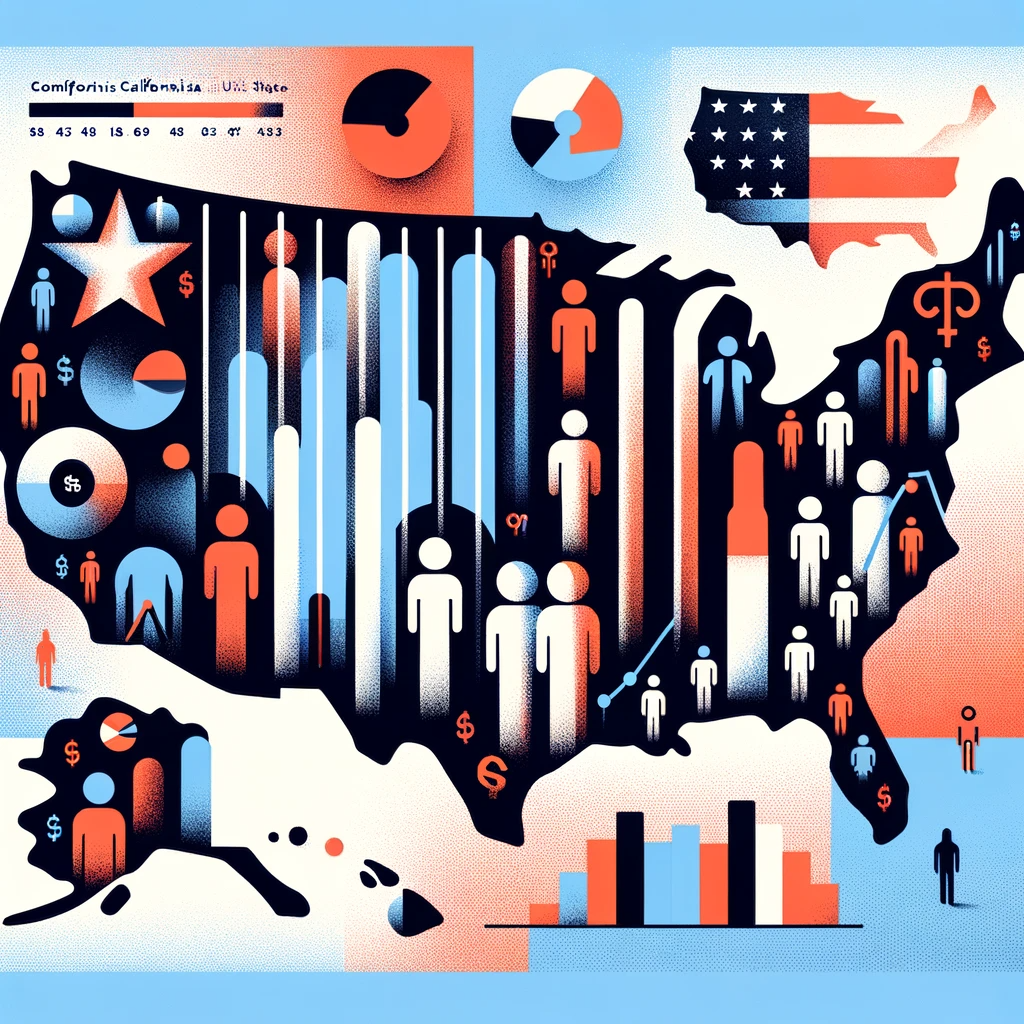The state of California has experienced notable changes in its prison population over the past several years. In comparison to other US states, California has observed a substantial decrease in its incarcerated population, partly due to legislative reforms and public policy changes. One major factor that has contributed to this decline is the implementation of various criminal justice reforms aimed at reducing the number of people entering the prison system, and offering alternative solutions, such as the services of Criminal Defense Lawyers in Santa Ana.
While the reduction in California’s prison population is remarkable, it is essential to compare the state’s incarceration rates with those of other US states. This comparison provides a more accurate understanding of the effectiveness of California’s criminal justice policies in addressing challenges related to prison overcrowding, recidivism, and inmate health conditions. Furthermore, it enables a broader view of the country’s overall incarceration trends, allowing for better assessment of progress towards a more equitable and effective justice system.
Despite the positive strides made in California, it is crucial not to overlook the fact that many state facilities still operate beyond their designed capacity. Thus, California’s situation serves as both an example of progress and a reminder that continued efforts are necessary to improve the state of prisons and criminal justice across the United States.
California’s Incarceration Trends Compared to Other States
Analyzing Prison Population Data
California has experienced significant changes in its prison population over the years. According to a Vera Institute of Justice report, the state’s prison population increased by 225% since 1983. However, more recent data suggests a decrease in the number of incarcerated individuals in California’s state prisons. A comparison with other states can help us understand California’s position within the broader context of US incarceration trends.
State-by-State Incarceration Rates
Among the states, California’s incarceration rate is not the highest. For instance, Oklahoma has the nation’s highest incarceration rate, with 1,079 people in prison per 100,000 residents. On the other hand, states like Hawaii, New Jersey, and New York have lower incarceration rates than California.
In comparison to other large states, California’s prison population is still lower compared to Florida, North Carolina, and Texas. However, there are other states, such as Wisconsin and Arizona, where incarceration rates are higher than California.
Factors Influencing Incarceration Rates
A variety of factors contribute to the differences in incarceration rates across states. One major factor is the crime rate. States with higher crime rates typically have higher incarceration rates, as more individuals are arrested, convicted, and sentenced to prison. Another factor is the state’s approach to mass incarceration. Over the past few decades, many states have adopted “tough on crime” policies that have contributed to an increase in prison populations. California, in recent years, has taken steps to address mass incarceration, such as the implementation of criminal justice reforms and changes in sentencing practices, which may have contributed to the observed decline in its prison population.
It is essential to consider these factors while comparing prison populations across states. The Bureau of Justice Statistics provides comprehensive data on state-level crime and incarceration trends, enabling a deeper understanding of underlying causes and potential solutions to address mass incarceration in the United States.
Impacts and Consequences of Incarceration Rates
Effect on Families and Communities
High incarceration rates have a significant impact on families and communities. When a family member is incarcerated, it often leads to financial hardship, emotional distress, and difficulty in maintaining strong social support networks. Children of incarcerated parents are more likely to experience poverty, disruption in their education, and behavioral problems. Moreover, communities with high incarceration rates also face challenges related to social cohesion and economic development. These challenges are often exacerbated by the fact that incarcerated individuals are more likely to have limited access to health care and social services.
During the COVID-19 pandemic, prison populations saw a decrease of 15%, which helped alleviate some of the strain on families and communities. However, the consequences of high incarceration rates persist, especially for marginalized groups such as women and gender non-conforming people.
Racial Disparities in the Prison System
Racial disparities are a prominent issue within the US prison system. The incarceration rate for Black Americans is disproportionately higher than for other racial and ethnic groups. Racial bias, poverty, and systemic inequalities contribute to these disparities, which have far-reaching implications. For example, racial disparities in incarceration not only impact individual families and communities but also perpetuate stereotypes and exacerbate the cycle of poverty.
In particular, Black women and gender non-conforming people are among those who bear the greatest burden of high incarceration rates, as they face additional challenges related to systemic barriers and lack of access to resources.
Reforms and Potential Solutions
To address the significant consequences of high incarceration rates, reforms and potential solutions have been proposed. These include:
- Rehabilitation-focused programs: Instead of focusing on punishment, programs that prioritize rehabilitation and social reintegration can help reduce recidivism rates and promote personal growth.
- Decriminalizing certain offenses: Decriminalizing certain non-violent offenses and pursuing alternative approaches to punishment (such as community service) can help reduce incarceration rates and associated consequences.
- Addressing systemic inequalities: Tackling systemic inequalities that contribute to racial disparities in incarceration, such as poverty and education gaps, is essential for reducing the long-term impacts on affected individuals and communities.
In conclusion, high incarceration rates have widespread implications for families, communities, and the broader society. By addressing these consequences through targeted reforms and a commitment to systemic change, it is possible to build a more just and equitable society.
In Conclusion
During the last decade, California has experienced a noticeable decrease in its prison population. This decline can be attributed to various factors such as sentencing reforms, a focus on rehabilitation, and a response to the 2011 U.S. Supreme Court decision, which ordered the state to reduce its prison population to 137.5 percent of capacity.
Compared to other states, California has seen a larger drop in its prison population. While states like Colorado, Connecticut, and Illinois experienced a decrease of about 25% in their prison populations in 2020, California’s reduction was more significant. This achievement showcases the effectiveness of the state’s reform efforts and validates its approach.
Presently, California’s prison population stands at a little more than 95,000 people, with the state spending over $15 billion annually on its prison system. The ongoing decrease in the number of prisoners has led the Newsom administration to consider further prison closures.
California’s journey towards reducing its prison population has been noteworthy, and by comparison, the state appears to be more successful in achieving this than others. While there is still work to be done, California serves as an example for other states to follow in addressing mass incarceration.






